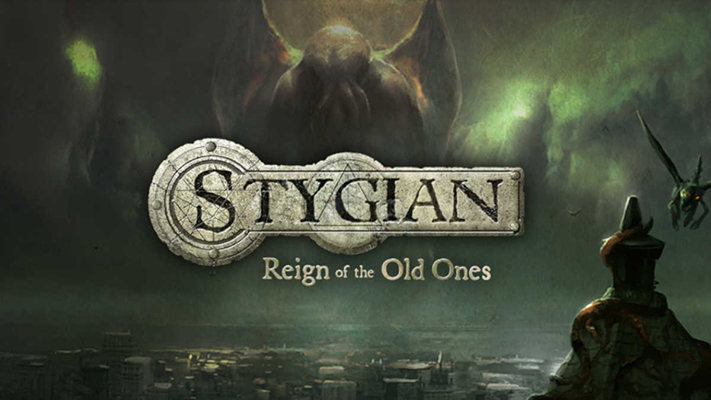
The infamous Arkham, Massachusetts Miskatonic University, which first appeared in 1922 as the setting to the widely renowned Herbert West-Reanimator, will be quite familiar to fans of H.P. Lovecraft and his eldritch horrors. It is also the setting for Stygian: Reign of the Old Ones, Cultic Games’ new 2D-isometric, supernatural-horror RPG. The game references many of Lovecraft’s works and even includes a few different NPCs in-game which bear his likeness. These references set the tone for the game: you are small, insignificant, and swept up in a maelstrom larger than yourself, where you have no hope of controlling the outcome or even your own fate. You are, by all accounts, f%#ked, both in the games narrative and by its design.
Stygian: Reign of the Old Ones
Publisher: 1C Entertainment
Developer: Cultist Games
Platform: PC
Release Date: September 26, 2019
Players: 1
Price: $29.99
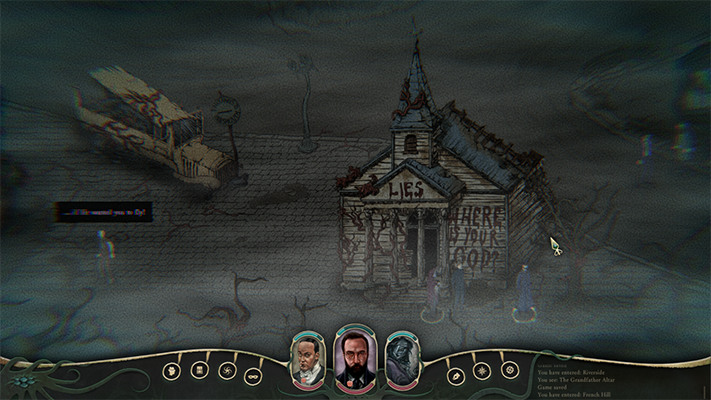
Unfortunately, staging the protagonist as a man hopeless against the powers that beset him is about where the similarities to H.P. Lovecraft’s works end, and with them, any reasonable appreciation for the game. The more you play, the more you realize that–despite trying to pay homage to Lovecraft and his works–the differences between them are stark.
Emotions evoked from Lovecraft’s works regularly convey utter hopelessness and an aura of veiled mystery. You will, indeed, feel hopeless pushing through the game, but not in the way that was intended. “What may be” holds no intrigue in Stygian, and any attempt at mystery ends lackluster and drab, much like the art direction for the game.
Time and care went into hand-drawing the locales in the game, but the objects and characters received much less attention. They seem superimposed, as if they’d been dropped on top of everything from an entirely different source. This compounds with the fact Stygian has numerous game mechanics involving the dimming, fogging, and manipulation of the entire screen (due to status effects) which literally make the game hard to look at and at times, hard to play.
This may have added depth to an action/adventure title, a first person atmospheric game, or a survival horror; but in an RPG where the main controls involve clicking on things you see on screen, it’s a disruption. They should have toned it down a notch–or three.
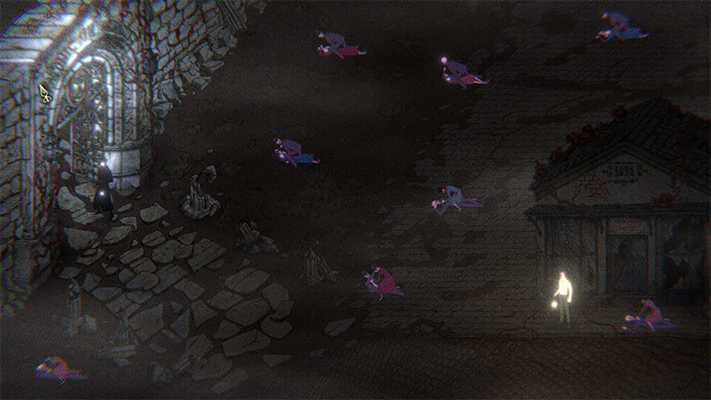
The soundtrack at times provided well needed elevation to the atmosphere, with its slow saxophones accompanied by haunting undertones. Other times, however, the game merely overlaps different styles of music in an attempt to be jarring or put the player on edge.
All it accomplished was to break immersion and prove itself horribly out of place.
The game play will be familiar to fans of the genre. Stygian makes use of familiar mechanics from some of the best games in genre; specifically, the original Fallout titles: Hex-grid, action-point, and turn-based combat, with a rich skill system, focusing heavily on story and dialogue mechanics.
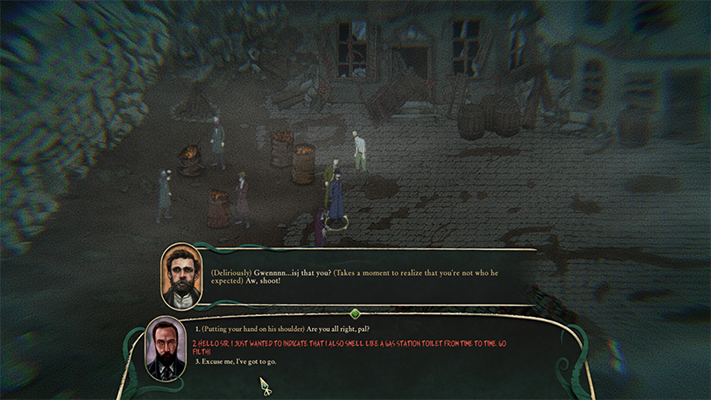
Line for line, the dialogue is well written. “Madness mechanics”, permanent debuffs you suffer as a result of losing too many “sanity points”, warrant the occasional chuckle given some of the dialogue options they unlock.
However, very few of these dialogue options, sane or otherwise, have meaningful influence on what actually happens in game.
The narrative seems loose and disjointed, with goals and quests having little or nothing to do with the proceeding or subsequent quest lines. The story-quests escalate so quickly it borders on comical. You’ll go from searching for radio parts, to the Necronomicon, in a matter of a few hours.
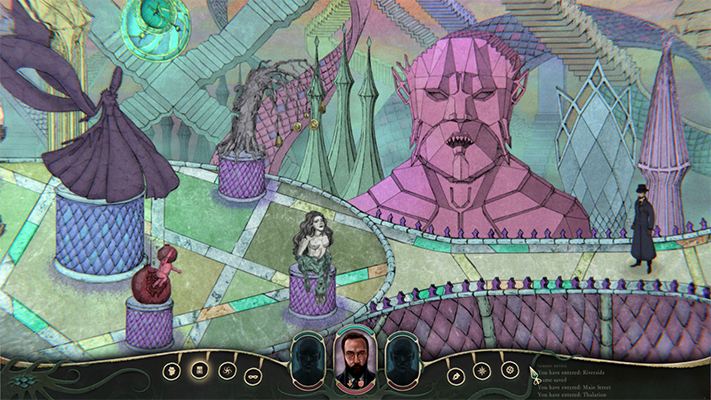
The characters themselves have decent dialogue options which vary with character build. One character, in particular, is always commenting on things happening around them and often contemplates the meaning and purpose of one’s actions, prompting the player to think about the game’s events from different perspectives.
Combat seems to have been piecemealed, formed completely separate from the game at large and tacked on after-the-fact. Every time combat occurs, the screen shifts to a static image letting you know a battle has begun.
This functions like an insanely tedious screen transition from a random battle in a JRPG, putting you into a battle map entirely separate from where you were in game. This is a strange design choice, considering other games in the genre (from 20 years ago, no less) generally engage combat where your character was on screen.
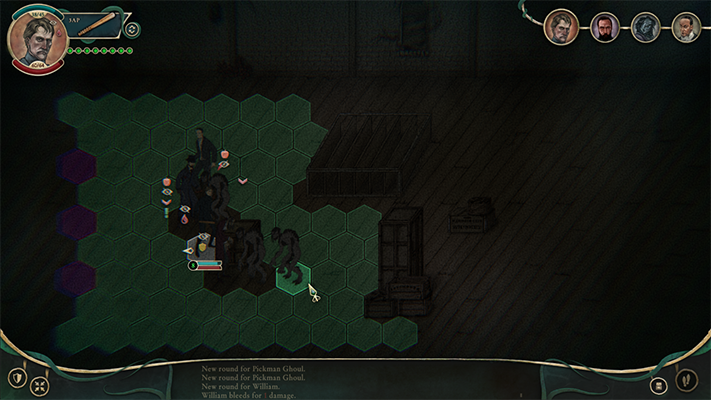
Many things about combat in Stygian will probably be familiar. Your character is equipped with everything from melee weapons, like clubs and bats, to firearms and magic spells.
With these, you’ll be put up against a variety of enemies: people driven insane, cultists, mobsters, and inevitably, alien horrors. You may notice a few things missing, however, if you’ve played other games in the genre.
For instance there is no indicator to show your chances of hitting an enemy, nor is there any way to determine the hp of an enemy. This is made worse by the fact that two of the same enemy can have wildly different hp values.
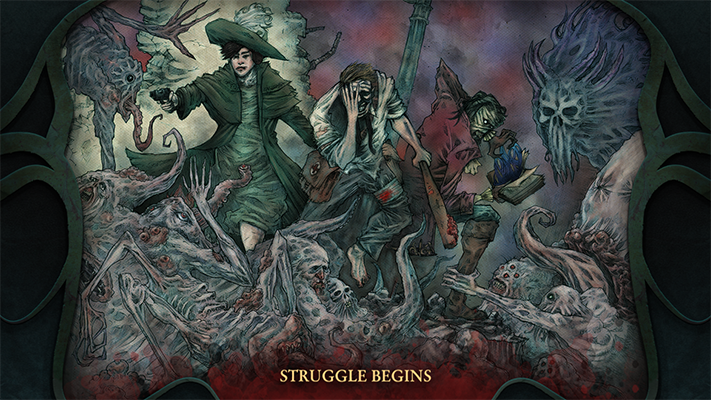
Like in other games based around the Lovecraft mythos, the odds in Stygian are stacked against you. You are slowly losing sanity with every action and trying to hold yourself together.
You will often be forced to give answers to NPCs based on what will console you, restoring vital sanity points, rather than based on what true or what the NPC actually needs to hear.
This, all in the hopes of avoiding more permanent and incurable insanity (and the associated and equally permanent-and-incurable debuffs). These debuffs affect everything from seeing what is on screen with a fog/blurring the screen, to crippling you in combat, or changing your accessible dialogue options.
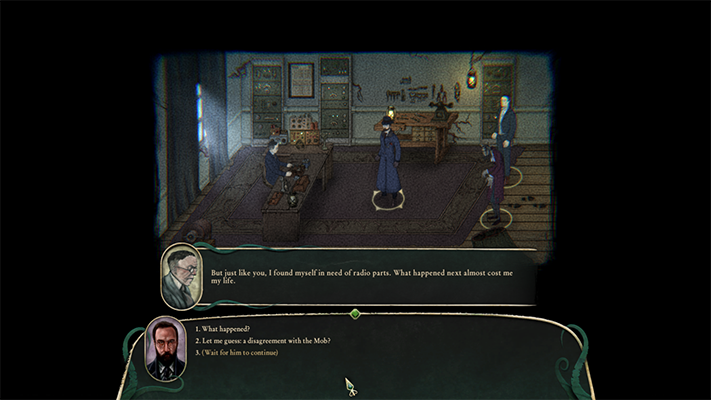
Seeing certain events, like the death of a companion, can increase “Angst” in your character, opening them up for a type of negative “perk”. Yet another permanent debuff.
It’s obvious Cultic Games was inspired by the great works of Lovecraft, and from these works they drew interesting ideas. The madness system was an innovative, if misapplied, twist on the genre.
It was, unfortunately, executed both hastily and without consideration to how it would affect the overall experience. Take away screen after-effects and an extra dialogue option here and there and all you are left with is permanently increasing game difficulty and the feeling that the game is penalizing you for playing.
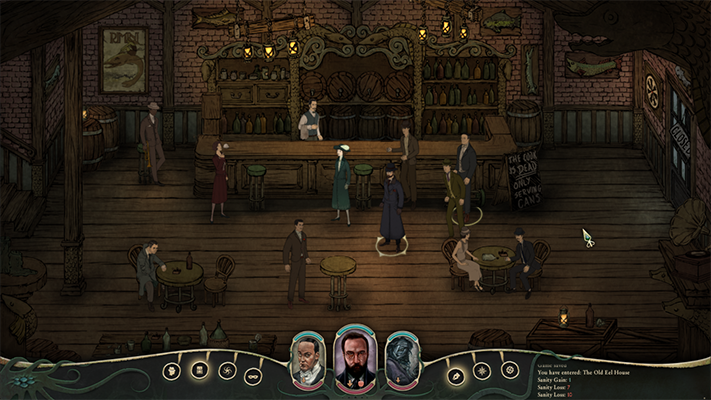
By the end, your author was–quite literally–forcing himself to push through combat to reach the next part of the story. Floating from quest to quest, you’ll find little in between.
A three choice dialogue here, a “Can you spare a few cigs?” there, and a sprinkle of “What’s this Cthulhu idol for?” all to come to the culmination of an abrupt cliffhanger ending with promises of a future title continuing the story. For the massive force of effort it takes to reach the end of the game, you’ll be left with no desire find out what comes next.
Stygian ultimately makes for an unfinished, buggy, disjointed, and confusing game. The madness suffered playing isn’t worth the time. Life was better before The Reign of the Old Ones.
Stygian: Reign of the Old Ones was reviewed on Windows PC using a review copy provided by 1C Entertainment. You can find additional information about Niche Gamer’s review/ethics policy here.